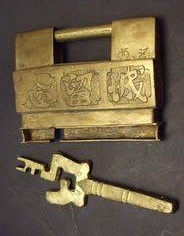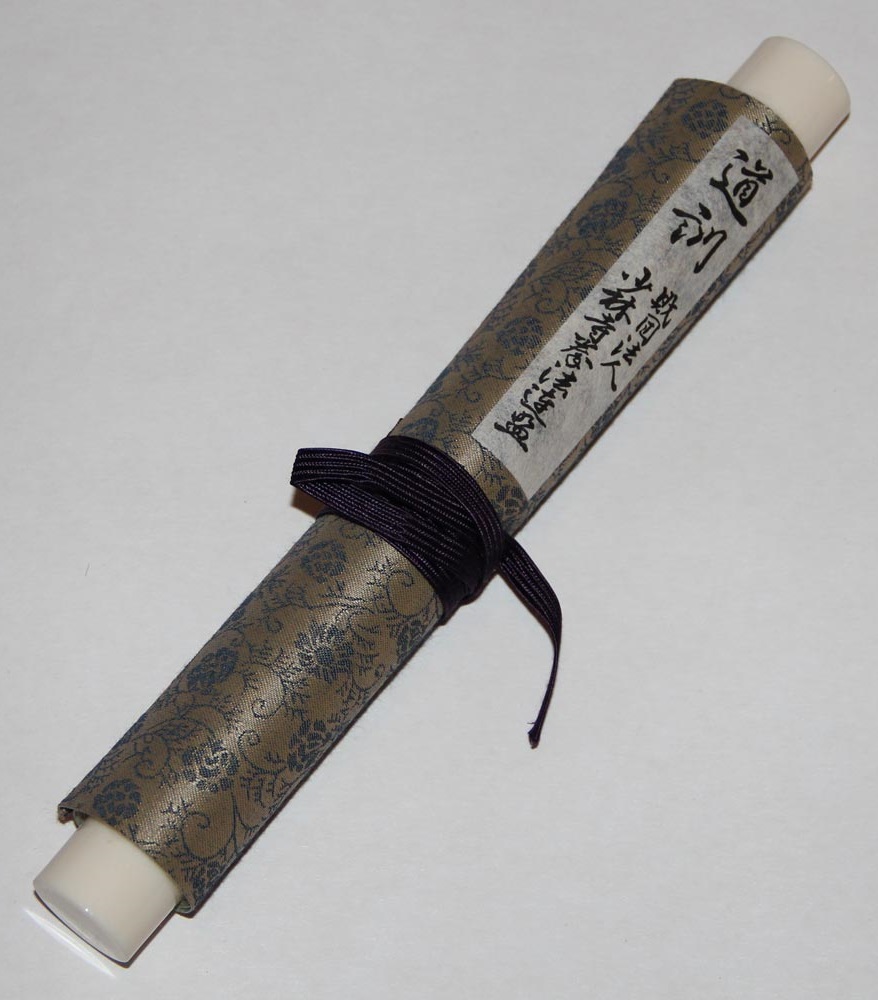Heian Godan Description
After bowing and announcing the name of the kata ("Heian Godan") ...
Yōi (cross open hands at groin level in
musubi dachi) and kiyomeri kokyū
(purification breaths)
Kamaete (shift right foot into nami heikō dachi
while closing hands into fists at knee width)
| 1 | Turn 90 degrees left into hidari neko-ashi dachi with hidari yoko uke, then gyakuzuki | |
| 2 | Step one foot-length forward and pivot 90 degrees to the right on the left foot, drawing the right foot into heisoku dachi whilst pulling both hands to the right hip in kansetsu waza (kote gaeshi) | |
| 3 | Turn 90 degrees right into migi neko-ashi dachi with migi yoko uke, then gyakuzuki | |
| 4 | Step one foot-length forward and pivot 90 degrees to the left on the right foot, drawing the left foot into heisoku dachi whilst pulling both hands to the left hip in kansetsu waza (kote gaeshi) | |
| 5 | Step forward into migi zenkutsu dachi with migi soete uke | |
| 6 | Step forward into hidari zenkutsu dachi with gedan kōsa uke, then pull both hands to the solar plexus and jōdan kōsa shutō uke ("gasshō uke") [see Note(1) under "Key Training Aspects" below] | |
| 7 | Turn both hands 180 degrees so they are wrist-to-wrist with the right palm facing right and left palm facing left, then as if joined at the wrist twist and pull them down to solar plexus level, finishing with the right hand palm up to perform ude hineri(2) | |
| 8 | Draw the right foot into heiko dachi with hidari chūdan yoko kentsui uchi and full hikite | |
| 9 | Step 90 degrees left into migi han-zenkutsu dachi with migi oizuki | |
| 10 | Turn 180 degrees right into shiko dachi with migi yoko gedan barai, immediately shifting the left foot into hidari han-zenkutsu dachi with hidari chūdan yoko kentsui uchi and full hikite | |
| 11 | Turn and open the left hand into nukite position, then step forward into migi han-zenkutsu dachi with migi chudan hiji ate against left palm and immediately draw the left foot forward into migi kōsa dachi(3) with soete ura-ken uchi(4) | |
| 12 | Pivot on both feet 180 degrees left into hidari neko-ashi dachi, then step forward and pivot 90 degrees left into migi kōsa dachi(3) with morote hikite followed by gedan kōsa uke | |
| 13 | Step 90 degrees right into migi zenkutsu dachi with migi soete uke | |
| 14 | Without moving the feet turn into hidari kōkutsu dachi with manji uke (manji nage) | |
| 15 | Without moving the arms draw the left foot into hidari han-kōkutsu dachi w, then step 45 degrees right into migi kōkutsu dachi with manji uke (manji nage) and kiai |
Zanshin yame (withdrawing right foot, turn 45 degrees
left and return to kamaete)
Naotte (perform tekagami movement while sliding right
foot into musubi dachi)
Rei (bow)


 At
left is photograph of a typical gasshō zukuri building, characterised
by its steep roof lines and the small projections at its
peak.
At
left is photograph of a typical gasshō zukuri building, characterised
by its steep roof lines and the small projections at its
peak.  When
learning a new kata, it is important to remind
oneself of the adage: "Manabu no tame ni hyakkkai,
jukuren no tame ni senkai, satori no tame ni manga
okonau" (学ぶのために百回、熟練のために千回、悟りのために万回行う.).
A hundred times to learn, a thousand
times for proficiency, ten thousand
repetitions for complete understanding.
A related Okinawan saying is "ichi kata san nen"
(一型三年): one kata three years. Think
of it this way: it takes about 40 seconds to
perform Heian Nidan. So in just ten
minutes per day for only ten days (or twenty minutes a
day for just five days), you can learn the correct
sequences of movements in Heian Nidan.
But to become truly proficient-to be able to perform it
correctly, and with the speed, power, timing, and bushi damashii (samurai spirit) necessary
to make its techniques effective in a real self-defence
situation will take a thousand repetitions, which
equates to 100 days at ten repetitions a day.
And to fully understand and apply all of its principles,
nuances, and variations will take 1,000 days (three
years) at ten repetitions per day.
When
learning a new kata, it is important to remind
oneself of the adage: "Manabu no tame ni hyakkkai,
jukuren no tame ni senkai, satori no tame ni manga
okonau" (学ぶのために百回、熟練のために千回、悟りのために万回行う.).
A hundred times to learn, a thousand
times for proficiency, ten thousand
repetitions for complete understanding.
A related Okinawan saying is "ichi kata san nen"
(一型三年): one kata three years. Think
of it this way: it takes about 40 seconds to
perform Heian Nidan. So in just ten
minutes per day for only ten days (or twenty minutes a
day for just five days), you can learn the correct
sequences of movements in Heian Nidan.
But to become truly proficient-to be able to perform it
correctly, and with the speed, power, timing, and bushi damashii (samurai spirit) necessary
to make its techniques effective in a real self-defence
situation will take a thousand repetitions, which
equates to 100 days at ten repetitions a day.
And to fully understand and apply all of its principles,
nuances, and variations will take 1,000 days (three
years) at ten repetitions per day.